Exploring the World of Roman Travel: Inns, Dangers, and Adventure Routes
In this article, we will:
- Explore the fascinating world of Roman travel, focusing on the importance of inns, the dangers faced by travelers, and the exciting adventure routes they took.
- Dive into the complex history of exploration, uncovering the attractions and risks that ancient travelers encountered.
- Uncover the secrets of traveling through the Roman Empire, including luxurious accommodations offered by wealthy patricians and the treacherous threats that awaited them on their journeys.
The birth of the Roman Republic, which brought about a significant change in governance and society, also had a major impact on these travel experiences. If you’re interested in delving deeper into this historical context, platforms like Second Life provide unique role-playing opportunities in virtual worlds inspired by Rome.
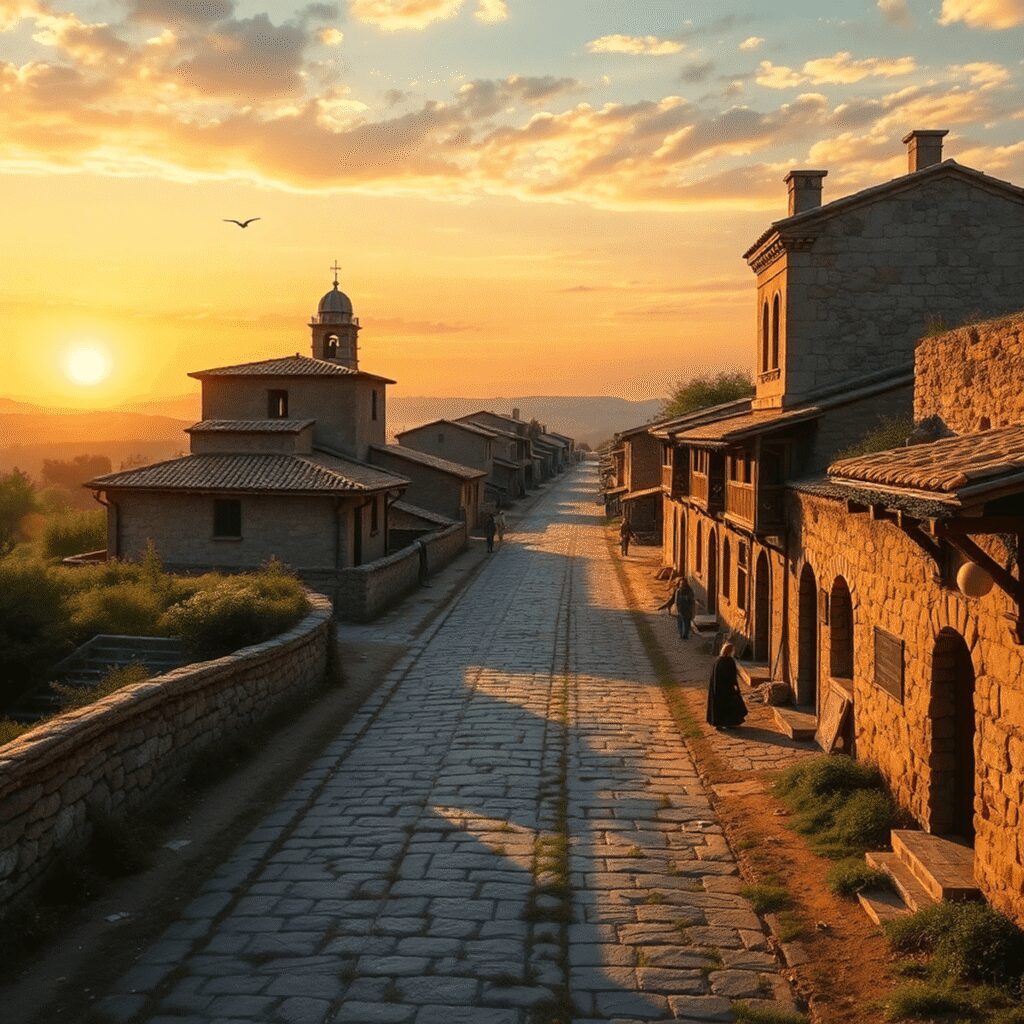
The Role of Inns and Caravanserais in Roman Travel
Traveling as a tourist in the Roman Empire involved a reliance on inns and caravanserais that played a crucial role in facilitating journeys across vast distances. Here’s a closer look at how these establishments shaped the travel experience:
1. Importance of Inns and Caravanserais
Inns and caravanserais were essential for providing shelter, food, and rest to weary travelers navigating the Roman Empire. These resting places served as vital hubs along well-traveled routes, offering a safe haven for both merchants and adventurers alike.
2. Variety of Lodging Options
Travelers had access to a range of lodging options, from simple roadside taverns to more elaborate inns catering to the elite. These establishments varied in amenities, with some offering basic accommodations while others provided more luxurious services such as baths, stables, and entertainment facilities.
3. Disparities in Lodging Quality
Despite the availability of inns and caravanserais, there were notable differences in the quality of accommodations offered. While some establishments were renowned for their comfort and hospitality, others were known for their rudimentary facilities and lackluster services. Travelers often had to make do with whatever lodging was available along their route.
In essence, inns and caravanserais were cornerstones of Roman travel, offering respite and refuge to those journeying through the Empire’s extensive road network. The varying levels of comfort and services provided by these establishments added layers of complexity to the travel experience, shaping the adventures and challenges faced by tourists exploring ancient Rome.
This travel experience was further influenced by several factors intrinsic to Roman society:
- The Twelve Tables significantly shaped Roman legal systems, which would have impacted various aspects of travel such as trade regulations.
- Understanding the structure of power during the Roman Republic is essential as it laid the foundation for modern democracies and established key principles of governance that resonate today.
- Historical figures like Scipio Africanus, who played crucial roles in military victories such as the Second Punic War, contributed to Rome’s expansion. This expansion meant more territories were accessible via these inns and caravanserais.
- The Roman army, known for its military might, also played a crucial role in maintaining peace along these travel routes which made them safer for travelers.
- Lastly, it’s important to note that the lives of plebeians, who represented the majority of Rome’s population, significantly influenced the socio-economic dynamics during this period. Their experiences often mirrored those of travelers relying on these inns and caravanserais for shelter and sustenance.
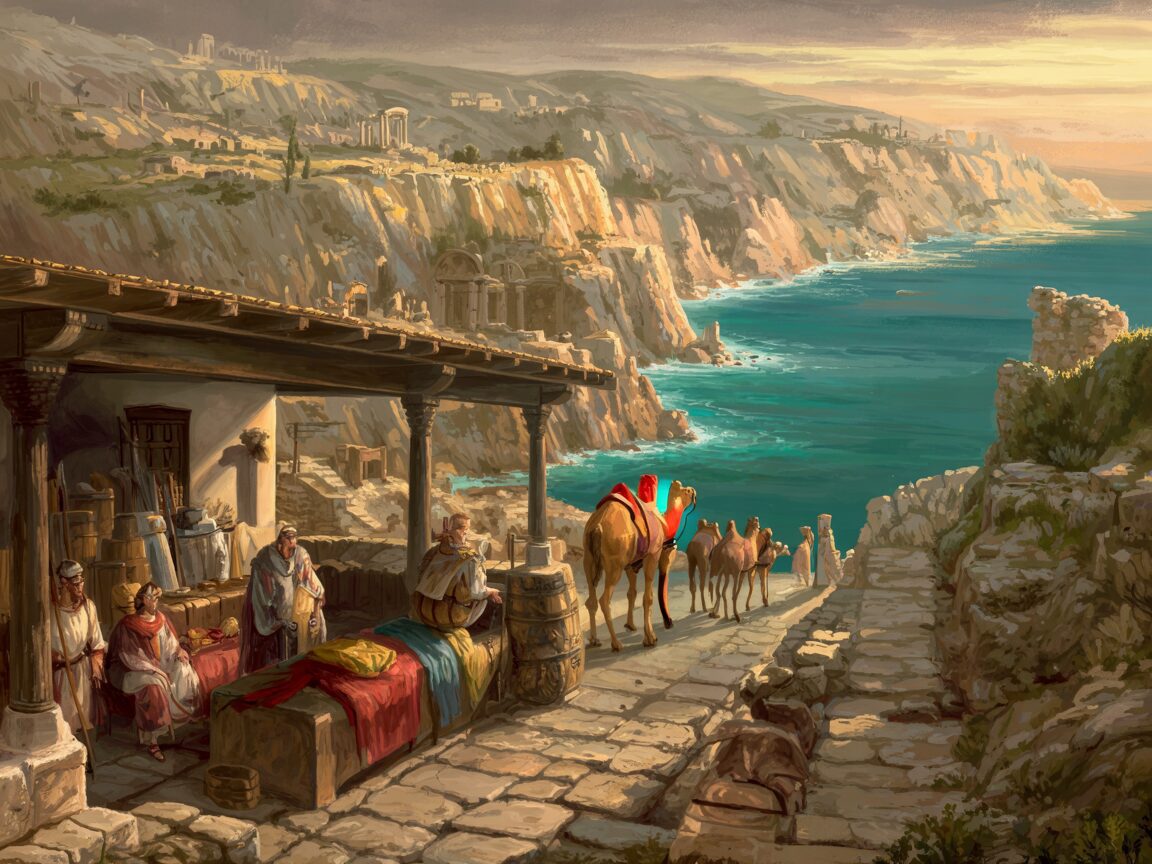
Navigating the Roman Roads: Itineraries and Main Routes
Travelers in the Roman Empire relied heavily on itineraries to navigate the extensive network of Roman roads efficiently. These road maps provided detailed directions and distances between significant landmarks, guiding travelers from one point to another with precision. By following these itineraries, individuals could plan their journeys effectively and ensure they stayed on track towards their desired destinations.
The main routes within the Roman Empire played a crucial role in facilitating travel for both military and civilian purposes. These well-established roads connected major cities, provinces, and vital outposts, allowing travelers to move swiftly across vast territories. Following these main routes was essential for efficient travel, as they were typically well-maintained and guarded, providing a safer passage compared to off-road alternatives.
Navigating the Roman roads using itineraries and sticking to the main routes not only ensured a more straightforward journey but also offered a sense of security and direction amidst the vast and sometimes perilous landscapes of the ancient world. Travelers who adhered to these prescribed paths could better anticipate rest stops, refueling stations, and potential hazards along the way, enhancing their overall travel experience in the Roman Empire.
However, it is important to note that while these roads facilitated movement and trade, they also played a part in the broader social dynamics of the empire. For instance, the legal status of women in Rome was deeply intertwined with their relationships with men, such as fathers or husbands. This complex interplay of rights and restrictions significantly influenced gender dynamics in ancient Rome.
Moreover, the philosophical landscape of Rome during this period was also shaped by external influences. The rise of Stoicism, a philosophical school founded by Zeno of Citium around 300 BCE in ancient Greece, emphasized living in harmony with nature, using reason, and practicing virtue as paths to achieving eudaimonia or human flourishing. These ideas became popular in Roman culture, influencing the thoughts and actions of important thinkers throughout the empire.
Additionally, it’s worth mentioning that the engineering feats accomplished by the Romans were not just limited to road construction. They achieved incredible engineering feats that changed the world, which had a lasting impact on future generations and served as a foundation for contemporary infrastructure systems.
Lastly, while discussing Roman society and its intricate dynamics, one cannot overlook the role of gladiators. These brave warriors admired for their skills in battle were also victims of a complex social system. They represent an intriguing aspect of Roman entertainment, raising questions about their status as heroes or victims within that context.
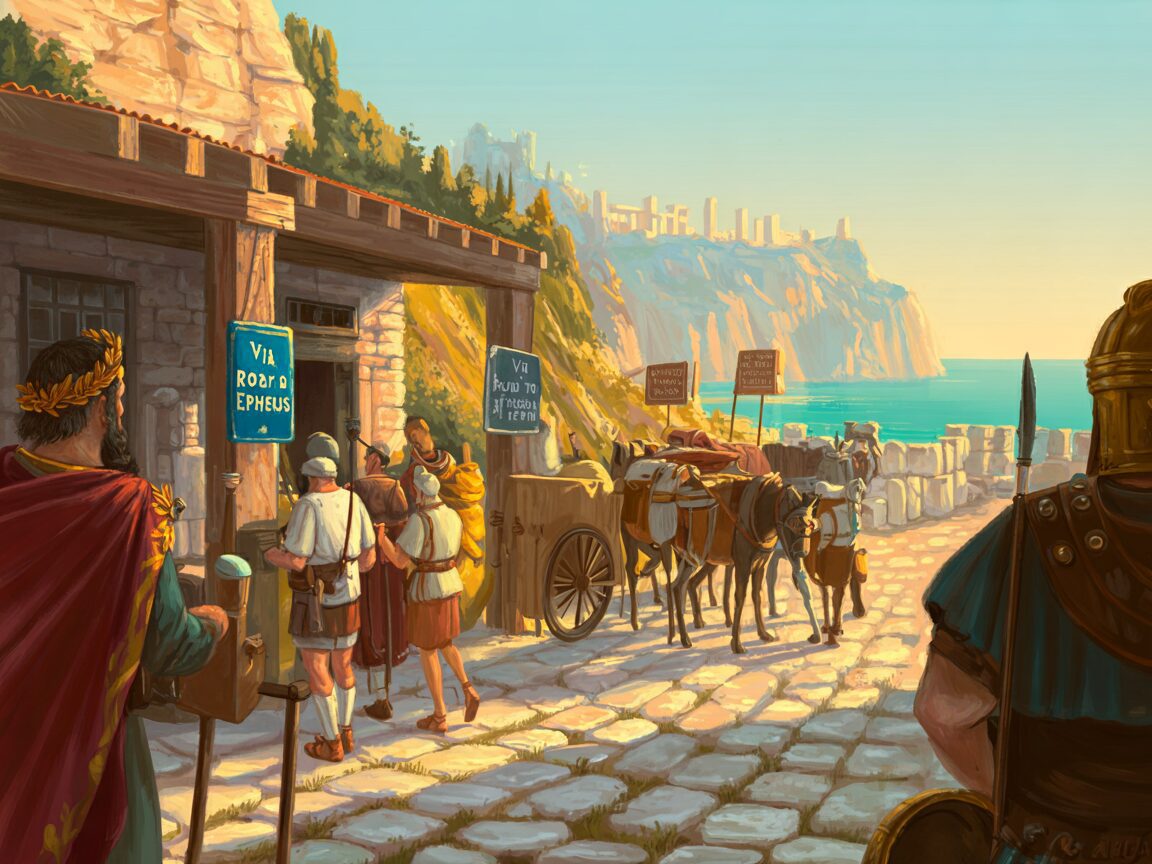
Travelers in the Roman Empire: Social Classes and Companions
During the era of the Roman Empire, travel was a pursuit mainly undertaken by individuals from different social classes. Here are some key aspects to consider:
1. Social Classes
- Nobility: The elite class encompassing aristocrats, high-ranking officials, and wealthy landowners often embarked on journeys for political, diplomatic, or leisure purposes. They traveled with retinues and servants to ensure their comfort and safety.
- Merchants: Business travelers traversed long distances for trade expeditions, relying on established routes and inns for accommodations and provisions. This aspect of travel was essential in a society where agriculture played a crucial role in economic growth, making trade and commerce vital for sustenance and wealth accumulation.
- Commoners: Individuals from lower social strata also undertook travel, albeit less frequently. Pilgrimages to religious sites or visits to family members in distant regions were common reasons for their journeys. These [religious practices](https://www.menofpompeii.com/exploring-the-ancient-roman-religion) often influenced the destinations of such travels.
2. Companionship
- Safety and Security: Traveling during ancient times was fraught with dangers such as bandit attacks or natural calamities. Having companions provided a sense of security and assistance in navigating unfamiliar terrains.
- Camaraderie: Sharing experiences with fellow travelers fostered camaraderie and offered protection against potential threats along the way.
These distinctions in social classes and the significance of companionship shed light on the diverse experiences of travelers in the Roman Empire. Additionally, it’s worth noting that travel wasn’t solely for personal gain or leisure; it also played a significant role in shaping the social class divide that characterized ancient Roman society. Moreover, the spectacle of ancient Rome including gladiators, chariot races, and theaters also drew many travelers, adding another layer to the complex tapestry of travel during this period.
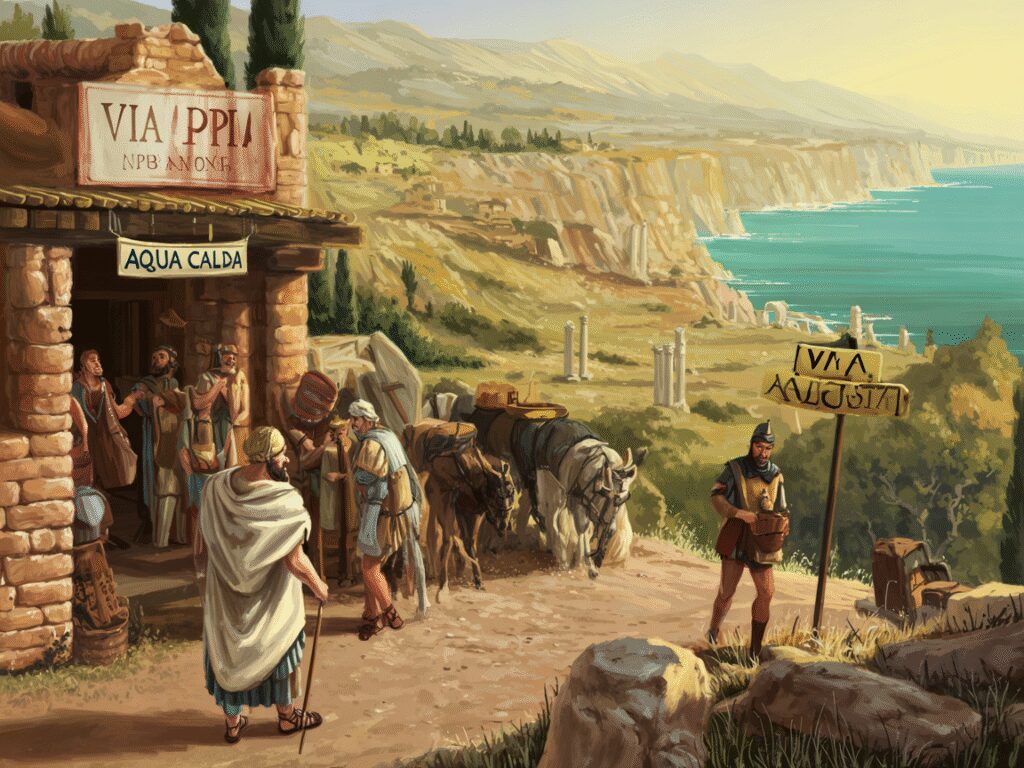
Encountering Dangers Along the Adventure Routes
Traveling in the Roman Empire was not without its dangers, especially when exploring the less-popular paths and adventure routes. Bandits lurking on Roman roads posed a significant threat to unsuspecting travelers, ready to attack isolated individuals or small groups. These bandits were known for their clever tactics and quick ambushes, taking advantage of vulnerable tourists who strayed from the main roads.
Staying Alert on Adventure Routes
The presence of bandits along these routes meant that travelers had to always stay alert, looking out for any signs of suspicious behavior or hidden threats. The possibility of being robbed or even harmed by these criminals added an element of risk and thrill to journeys through the Roman countryside.
Taking Precautions Against Banditry
It was crucial for travelers to take precautions, such as:
- Traveling in larger groups for safety in numbers
- Being watchful in unfamiliar areas where banditry was more common
The danger posed by bandits on Roman roads highlighted the importance of being careful and prepared when going on adventurous trips during ancient times.
Experiencing Diverse Landscapes and Historical Sites: The Lycian Way
The Lycian Way is one of the most famous adventure routes during the Roman Empire, going through an area full of history and natural beauty. This long trail follows old Roman roads and paths in what is now southwestern Turkey, giving travelers a chance to see both the past and stunning views.
Key highlights along the Lycian Way include:
- Stunning Coastal Views: The path hugs the Mediterranean coastline, presenting panoramic vistas of turquoise waters, rugged cliffs, and remote beaches. These views were as captivating to ancient tourists as they are to modern-day travelers.
- Ancient Ruins: Landmarks such as Patara Beach, famous for its expansive sandy shore and remnants of an important Roman port city, provide a tangible connection to antiquity. Nearby, the ruins of Xanthos reveal a once-thriving Lycian capital with well-preserved theaters, tombs, and inscriptions that showcase Roman architectural influence.
- Diverse Terrain: The route traverses various landscapes—pine forests, mountain passes, and fertile valleys—each offering different challenges and rewards for travelers seeking both adventure and historical insight.
Navigating the Lycian Way
Navigating the Lycian Way required careful planning due to its length and variety of terrains. Inns and small settlements along the trail served as essential rest points. For Romans embarking on this journey as tourists or pilgrims, the route offered a blend of cultural enrichment and physical challenge—elements that defined travel experiences in the empire.
This path exemplifies how Roman adventure routes combined practical infrastructure with opportunities for exploration, connecting people to diverse environments and significant heritage sites. It also serves as a reminder of the legacy of Ancient Rome, which remains a cornerstone of Western civilization. From its inception as a small city-state to its transformation into a vast empire, Rome’s influence is both profound and enduring.
For those interested in delving deeper into the fascinating world of Ancient Rome, including its rise and fall or its architectural masterpieces, resources such as Men of Pompeii offer engaging content that brings the past to life.
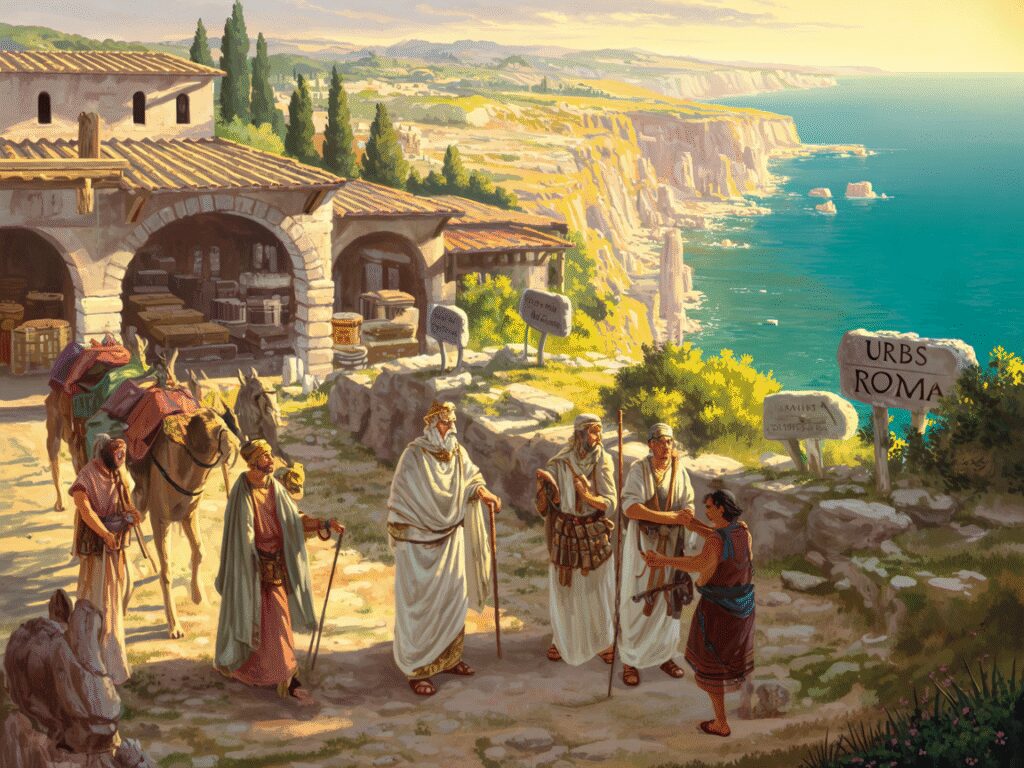
Practical Challenges Faced by Tourists in Ancient Times
Traveling as a tourist in the Roman Empire involved navigating several practical difficulties, many of which still resonate with modern travelers exploring ancient sites. Understanding these challenges can help you prepare better for your own journeys.
1. Lodging Arrangements at Inns or Campsites
One of the biggest hurdles was finding places to stay. Inns varied from basic roadside stops to large caravanserais, but availability was often limited outside major towns. Booking ahead was impossible, so flexibility and preparedness were essential. You can apply this lesson today by:
- Researching accommodations in advance, especially near popular historical routes.
- Carrying portable camping gear if you plan to explore less developed areas along paths like the Lycian Way.
- Being ready to adapt if booked lodgings fall through, as remote locations may offer fewer alternatives.
2. Navigational Challenges
Travelers relied on itineraries rather than detailed maps, making getting lost a common occurrence. While modern GPS technology eliminates much guesswork, studying ancient route markers and landmarks enhances the experience and safety.
3. Safety Concerns
Banditry and wild animals posed threats then; today, uneven terrain, weather shifts, and isolated spots demand caution. Traveling with companions and informing others about your plans increases security.
However, it’s not just the physical aspects of travel that have evolved over time. The legal frameworks governing travel have also undergone significant changes.
The Influence of Roman Law
For instance, Roman Law, which originated in ancient Rome around 753 BCE and lasted until the 5th century CE, has played a crucial role in shaping modern legal systems. Its principles are still relevant in various legal systems today. A deeper understanding of this legacy is essential for grasping the foundations of contemporary laws.
The Enduring Impact of the Corpus Juris Civilis
Moreover, the Corpus Juris Civilis, or Body of Civil Law, commissioned by Emperor Justinian I in the 6th century AD, serves as a significant achievement in the history of law. This comprehensive codification not only preserved ancient Roman legal principles but also adapted them to contemporary society’s needs.
Applying these practical tips ensures that when you follow ancient adventure routes, you embrace both the spirit of discovery and the realities of travel logistics faced by tourists centuries ago.
Conclusion
Traveling as a Tourist in the Roman Empire offers a unique blend of adventure and caution. Exploring the ancient roads, inns, and adventure routes brings to life the experiences of travelers from centuries past. By embracing the spirit of adventure while being mindful of potential dangers, you can truly immerse yourself in the rich history and landscapes of this fascinating era. Remember to tread carefully but boldly as you follow in the footsteps of those who journeyed through the Roman Empire. Safe travels on your historical explorations!

